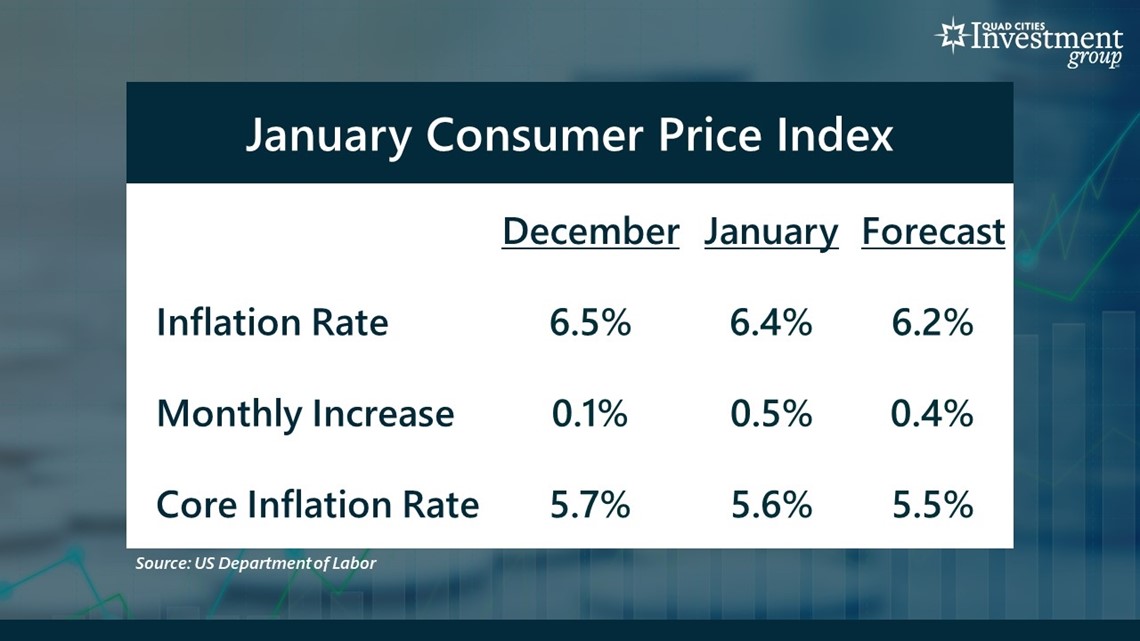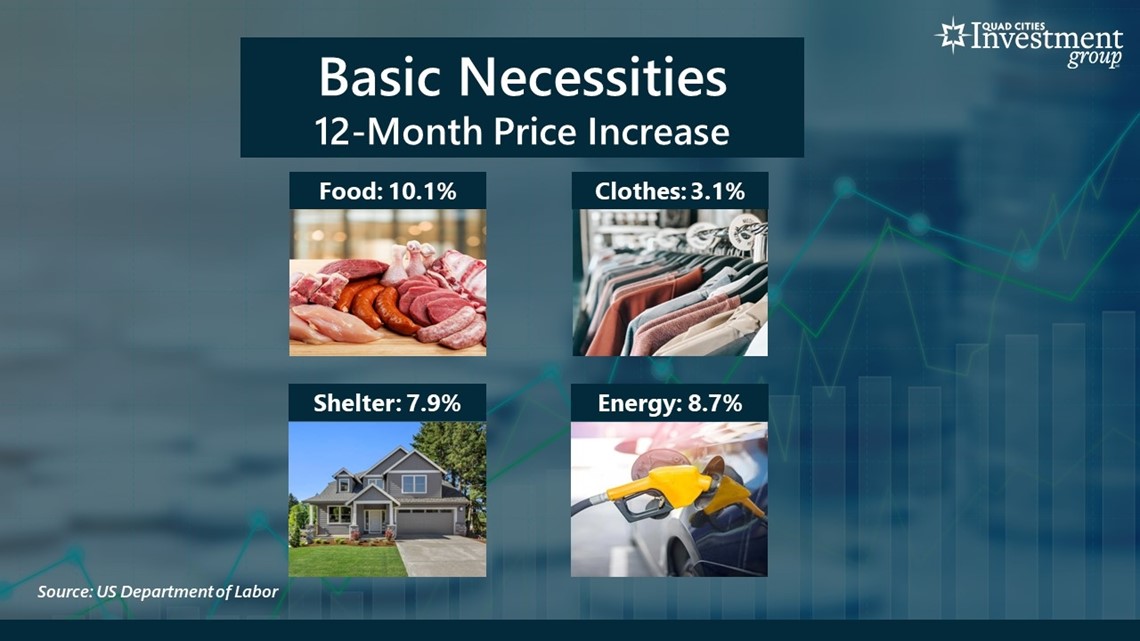MOLINE, Ill. — On Tuesday, the U.S. Department of Labor’s Consumer Price Index reported that in January the annual inflation rate eased slightly from 6.5% to 6.4%.
Despite the gradual decline, Wall Street was quick to express disappointment in the latest inflation numbers, triggering an end-of-week sell-off in the U.S. stock market.


Mark Grywacheski with the Quad Cities Investment Group joined WQAD's David Bohlman to discuss what this latest inflation report means for the state of the economy.
Bohlman: If this latest data shows that inflation further declined in January, why was Wall Street so disappointed in the results?
Grywacheski: The goal is for inflation to not just decline, but to return (ideally as quickly as possible) to that 2% target rate of inflation we want to return to. We haven’t had an inflation rate below 2% since February 2021 (1.7%). The longer this high inflation lasts, the longer this inflation inflicts pain on consumers, businesses and the economy. And this latest data confirms that even though inflation is gradually declining, it remains much hotter that Wall Street would like to see.
- Inflation rate
- Monthly increase
- Core inflation rate
Bohlman: When should consumers expect to see a return to a 2% inflation rate?
Grywacheski: In my opinion, this latest data reaffirms that any return to a 2% rate of inflation will be a very slow, gradual process. This means that inflation will likely remain historically high for most, if not all, of 2023 and potentially even into 2024. So, if inflation remains higher-for-longer, that likely means the Federal Reserve will be forced to keep interest rates high-for-longer. So, this combination of high inflation and interest rates will continue to act as a weight on the US economy when the economy is already expected to enter a recession sometime this year.


Bohlman: We’ve repeatedly talked about the impact of inflation on everyday basic necessities. Are we starting to see some improvement in this area?
Grywacheski: One of the hallmarks of this 2-year inflationary cycle is that some of the largest price increase have been on everyday basic necessities. And that brings up another reason why Wall Street was so disappointed by this latest data. Over the past 12 months:
- Food (+10.1%)
- Clothing (+3.1%)
- Shelter (+7.9%)
- Energy (+8.7%)
In January alone, consumer prices rose by a hefty 0.5%. But more than ½ of that monthly increase came from the rising cost of shelter. Food/shelter/energy accounted for 92% of January’s monthly increase. So, inflation continues to impact basic necessities the hardest.
Quad Cities Investment Group is a Registered Investment Adviser. This material is solely for informational purposes. Advisory services are only offered to clients or prospective clients where Quad Cities Investment Group and its representatives are properly licensed or exempt from licensure. Past performance is no guarantee of future returns. Investing involves risk and possible loss of principal capital. No advice may be rendered by Quad Cities Investment Group unless a client service agreement is in place.
Watch more news, weather and sports on News 8's YouTube channel

